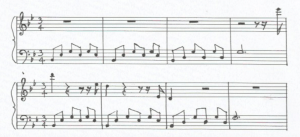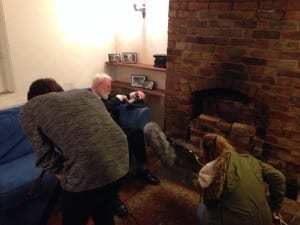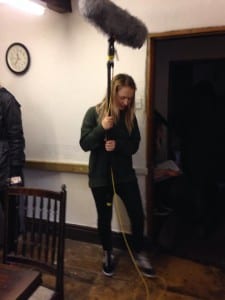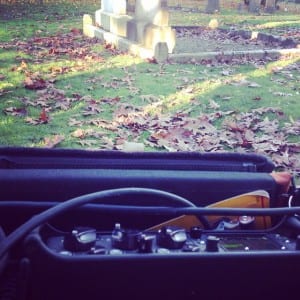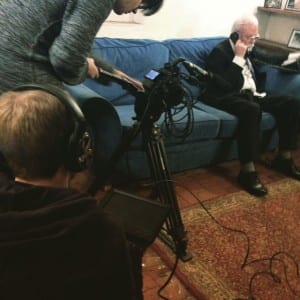This blog is to discuss and explain the early decisions made by myself to do with the composition of music for George.
Starting the composition process was the hardest part. I found it difficult to create the music without seeing the visual layout of the film first. Perhaps this may have been helped by storyboards, however these were not provided. To start, whilst we were still filming, I came up with a short melody and key to work in. This enabled me create key features that would be apparent through out the film. As shown below:
This short section is set in G minor and plays about with Bflat Major chord as well (it being the relative minor). It contains some arpeggios and starts a main melody which will be recurring throughout the film as you can hear in the MIDI version I have attached:
Using a MIDI instrument reaffirmed my need for a real piano to record on – as you can hear it sounds quite robotic with little emotion. Having a short melody and key to go with helped me a lot when it came to later on in the process. I am also thankful I didn’t compose anymore music until after the film was shot as the script and film structure changed a fair bit whilst shooting. This obviously changed a lot of music cues.
Once we had some rough edits of visuals during filming I was able to see the structure of the film easily. This enabled me to devise a new music cue sheet (as shown on my music cue blog) of where I felt music was needed. This created four main sections of music for the film: Title sequence, travel song, dream sequences 1&2 and End credits. These pieces are to extend over the film to fit with the image.
For making these four pieces I re-recorded the original melody which became the opening title sequence, sticking to these melodies and arpeggios. However whilst watching the rough edits I felt it necessary to introduce another major theme right at the beginning before this starts. As shown below, it is a series of 3 chords:
Although simplistic I felt it important to attach this to George’s character as a sort of Leitmotif. This will occur when George is first on screen, when his character is sad and it also acts as a reminder of the George’s past. By doing this within the first 10 seconds of the film I have attempted to create a signifier for George as a person. Through also connecting this motif to other events it will hopefully begin to signify George’s story to the audience as not much of it is displayed in the visual.
The second piece is to go along with scenic shots of George travelling outside, the pace is a bit more upbeat and the key is very minor to signify George as being worried. For the dream sequence, what I came up with is at risk of sounding a little too dramatic for what the scene actually looks like. Therefor I have decided I will work on it further, then decide whether or not it is needed as we intend to do a lot with sound fx. This decision will also partly be down to the director. Finally with the end sequence I have decided to do a 4 minute section of music which is continuous until the end of the film. This piece changes pace quite a lot and attempts to display George’s changing emotions throughout these 4 minutes. Here I have played a lot with dynamics and tempo but still sticking to the main musical themes of the previous music. Then at the end, including the main credits, it concludes the way it began with the same arpeggios and slightly altered melody to conclude the film.
The next step from here will be filling out the pieces (if needed) using electronic sounds on Pro Tools. For this I had originally planned acoustic instruments but I know think electronic sounds will have the same impact in helping the melodies created by the piano fit the film.
